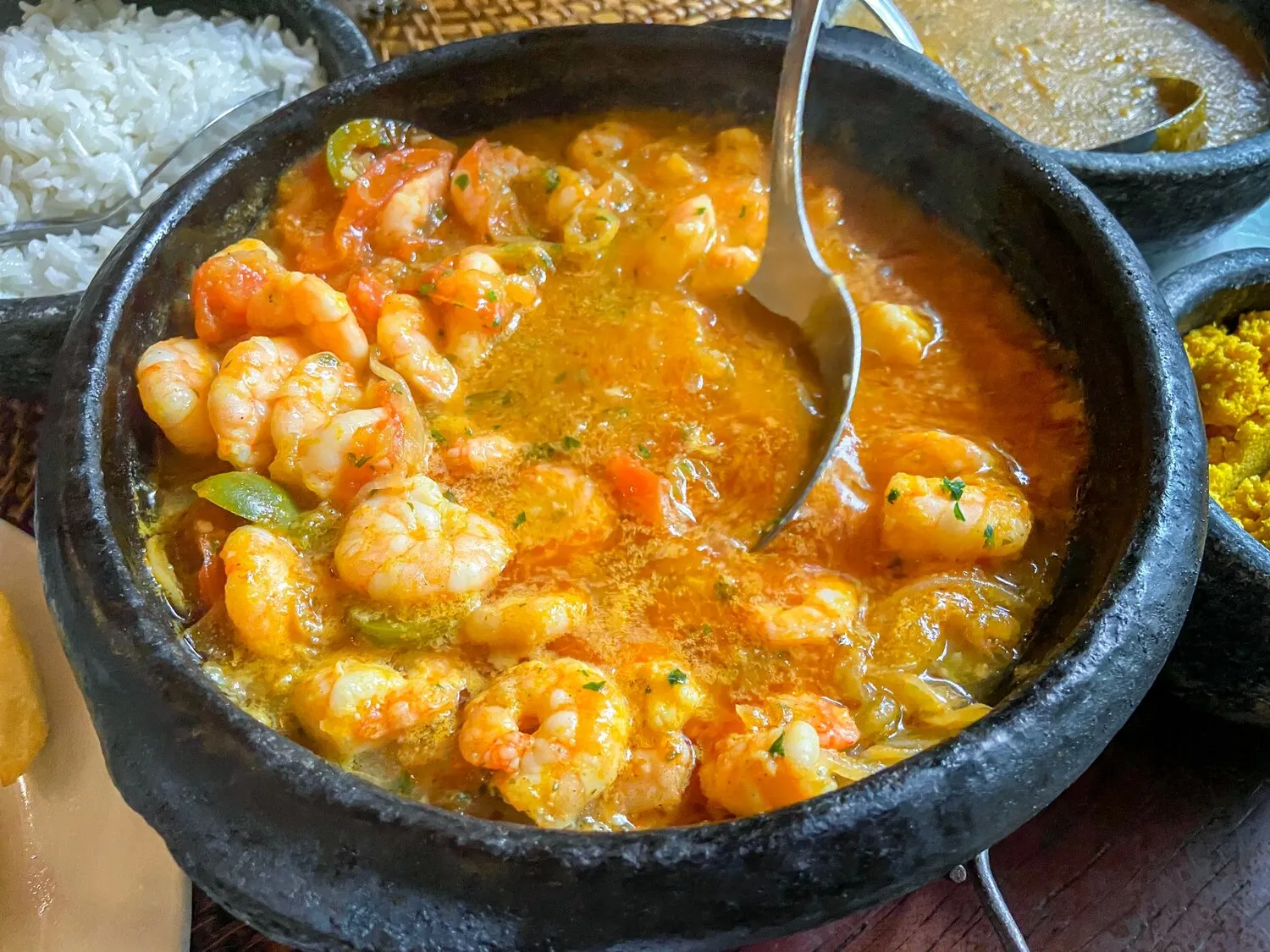
Moqueca de Camarão
Shrimp stew cooked in a clay pot with coconut milk, tomatoes, onions, peppers, and cilantro. A rich and flavorful dish.
Nutrition Facts
* The % Daily Value (DV) tells you how much a nutrient in a serving of food contributes to a daily diet. 2,000 calories a day is used for general nutrition advice.
Antonio's Restaurante
Moqueca's origins can be traced back to indigenous Brazilian cooking techniques, particularly the use of clay pots for cooking stews. African influences, brought by enslaved people, significantly shaped the dish with the introduction of ingredients like coconut milk and palm oil (dendê oil). Portuguese colonization also played a role, introducing tomatoes, onions, and bell peppers.
Moqueca is more than just a dish; it's a symbol of Brazilian culinary heritage, particularly in the states of Bahia and Espírito Santo. It represents a fusion of indigenous, African, and Portuguese influences, reflecting the country's rich cultural diversity. It is often served at family gatherings and celebrations.
Regional Variations
There are two main types of Moqueca: Capixaba (from Espírito Santo) and Baiana (from Bahia). Capixaba uses annatto seeds for color and olive oil. Baiana uses dendê oil (palm oil) and coconut milk for a richer, more intense flavor.
Communal Eating
Moqueca is traditionally served in the clay pot it was cooked in, often placed in the center of the table for everyone to share. This communal aspect emphasizes togetherness and celebration.
Celebratory Dish
Moqueca is a common dish served during special occasions, such as birthdays, holidays, and family reunions, signifying abundance and festivity.
Moqueca de Camarão is a symphony of flavors, balancing the sweetness of shrimp and coconut milk with the acidity of tomatoes and the aromatic qualities of onions, peppers, cilantro, and often dendê oil (palm oil) and lime juice.
The dominant flavors are sweet (coconut milk, shrimp), savory (shrimp, vegetables), acidic (tomatoes, lime juice), and aromatic (onions, peppers, cilantro, dendê oil if used). The dish has a rich, creamy texture derived from the coconut milk and the slow cooking process. The dendê oil, if used, imparts a unique, slightly earthy and reddish hue and flavor that is characteristic of Bahian cuisine.
Freshness is Key
Use the freshest shrimp available. The quality of the shrimp directly impacts the overall flavor of the dish. Look for firm, translucent shrimp with a fresh sea smell.
Don't Overcook the Shrimp
Shrimp cooks quickly. Add them towards the end of the cooking process to prevent them from becoming rubbery. They should be just cooked through and still slightly tender.
Use a Clay Pot (if possible)
While not essential, cooking Moqueca in a traditional clay pot enhances the flavor by imparting a subtle earthy note. If using a clay pot, cure it properly before first use to prevent cracking.
Dendê Oil (Palm Oil) Caution
If using dendê oil, use it sparingly as it has a strong, distinct flavor. Start with a small amount and adjust to taste. It also stains easily, so be careful when handling it.
Layer the Flavors
Sauté the onions and peppers until softened before adding the tomatoes and other ingredients. This helps to develop the base flavors of the dish.
Explore additional Seafood dishes and restaurants
Explore SeafoodDiscover top dining spots and culinary experiences in Florianopolis.
Explore FlorianopolisLearn more about the food culture, restaurant scene, and culinary heritage of Brazil.
Explore Brazil